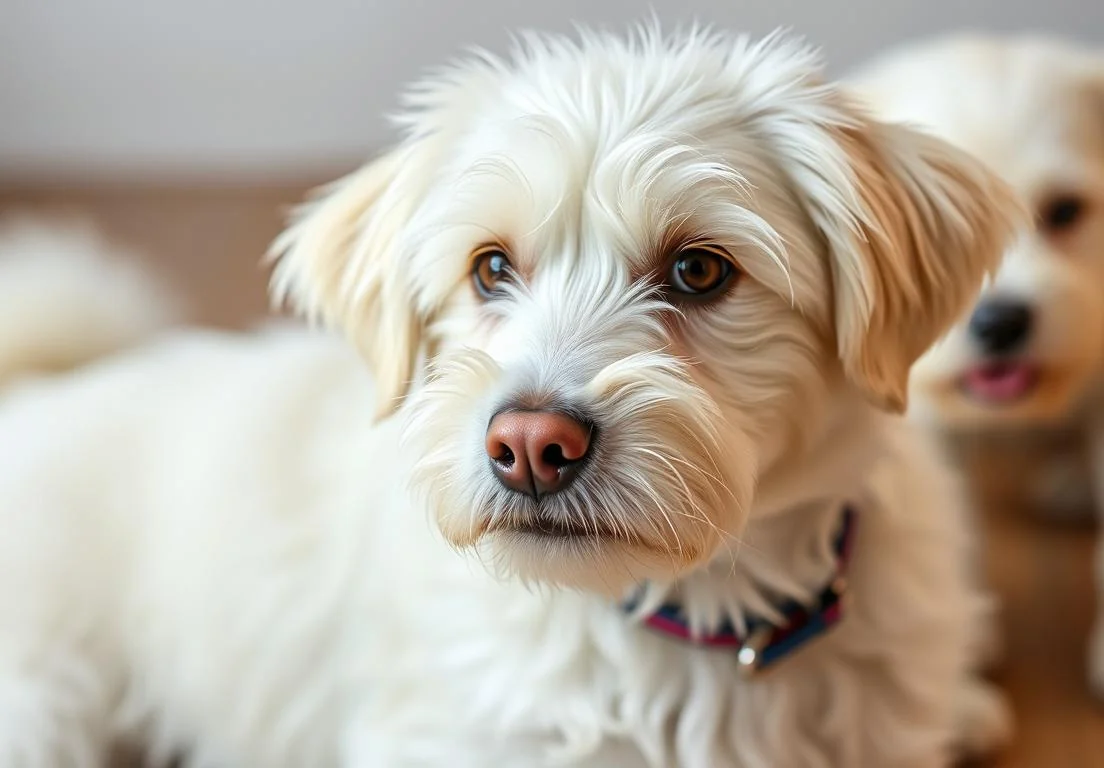In dog training, timing is everything. A well-timed reward can transform a confusing command into a learned behavior. Understanding the nuances of reinforcement schedules can significantly enhance your dog’s training experience and strengthen the bond between you and your furry friend.
Reinforcement schedules are vital tools in dog training that dictate when and how rewards are given. They help shape behavior by encouraging your dog to repeat desired actions, fostering learning and reinforcing good habits. There’s a whole world of techniques and strategies behind reinforcement schedules that can elevate your training game, so let’s explore this fascinating topic further!

What Are Reinforcement Schedules?
Reinforcement schedules are pivotal in dog training, acting as a predictable framework that dictates how and when rewards are delivered in response to a dog’s behavior. At their core, these schedules can guide your pup’s learning process by either enhancing or diminishing specific behaviors. Instead of just rewarding your dog every single time they perform a desired action, reinforcement schedules introduce variation in reward timing and frequency, enabling more robust learning.
For example, consider the difference between a fixed schedule, where the reward is given every time the dog follows a command, versus a variable schedule, where rewards are delivered randomly but still progressively. The unpredictability of variable reinforcement often produces stronger and more enduring behaviors. Teaching a dog to sit by rewarding them only occasionally can lead to more reliable performances over time, as they remain motivated, wondering when the next treat might come.
Understanding reinforcement schedules allows trainers to tailor their approach based on the dog’s learning style and temperament. It’s not just about giving treats; it’s about timing and strategy that reflect an understanding of canine psychology.
Why Do Reinforcement Schedules Matter?
The impact of reinforcement schedules on dog behavior is profound and profound. Using the right schedule can either enhance your training efficiency or inadvertently strengthen unwanted behaviors. Research shows that dogs learn more reliably and retain information better when the reward system aligns appropriately with their instinctual drives (source: American Veterinary Society of Animal Behavior).
Here are some specific reasons why these schedules are essential:
Behavior Sustainability: Dogs trained with intermittent reinforcement tend to perform learned behaviors more consistently over time. This is because the unpredictability keeps them engaged, which is particularly useful for behaviors that are desired in various contexts.
Motivation Levels: By varying the schedule, you can keep your dog motivated. A dog that knows they might get a treat sometimes will be much more enthusiastic in their training.
Minimizing Frustration: If you’re reinforcing every single time, any lapse can lead to confusion or frustration for your dog. A balanced approach helps to manage expectations.
Resilience to Distractions: An interval schedule can help your dog learn to stay focused on you, even in the presence of distractions. This adaptability prepares your dog for real-world situations.
In conclusion, the nuances of how and when you reward your dog shape their learning journey significantly. By mastering these schedules, you’re not just training your dog; you’re building a lasting relationship based on trust, understanding, and effective communication.
What Are the Different Types of Reinforcement Schedules?
Reinforcement schedules are fundamental in dog training, shaping how and when your pup receives rewards for good behavior. Here’s a quick glance at the key types:
Continuous : Every desired behavior gets a reward. It’s great for teaching new tricks or commands because it keeps your dog motivated and helps them make connections. Just remember, dogs can become dependent on this setup, so gradually move to a different schedule as they learn.
Fixed-Ratio : Rewards are given after a set number of behaviors. For example, you can give a treat after your dog sits three times. This encourages consistent performance and maintains engagement, as dogs quickly learn they’ll receive a reward after their efforts.
Variable-Ratio : This one’s a game-changer! Rewards come after an unpredictable number of behaviors. Think of it like a slot machine—sometimes they win quickly, sometimes they have to try a bit longer. This schedule keeps dogs on their toes and can lead to stronger, more persistent behaviors.
Fixed-Interval : Rewards are offered after a specific time period. For instance, you might reward your dog every five minutes they stay calm. This can be useful for ingraining patience, but make sure to keep the time intervals reasonable to avoid frustration.
Variable-Interval : Here, rewards come at unpredictable times. For example, your dog might get a treat for staying quiet at random intervals. This method builds a reliable behavior because the unpredictability keeps them engaged.
Understanding these schedules isn’t just academic; it’s practical. You’ll find that mixing these can create a robust training regimen that keeps your dog eager to learn and perform.
How Does Timing Affect Training?
Timing is everything in dog training. A well-timed reward strengthens behavioral connections in your dog’s mind. If your pup performs a trick and gets a treat seconds later, that association is crystal clear. But if there’s a delay, the dog might not link the treat with the action.
Consider this: immediate feedback is crucial. The more quickly you reward a correct behavior, the stronger that behavior gets reinforced. When using reinforcement schedules, try to maintain this immediacy, especially with continuous reinforcement while establishing a new behavior.
For example, if your dog sits on command, treat them right away—literally, within a second or two. On the flip side, if you’re employing a variable schedule, the timing can vary slightly but still should occur relatively soon after the desired behavior.
Additionally, there’s something to be said about context. If you reward your dog while they’re in the middle of a task—like playing fetch—it can confuse them if the reward doesn’t seem directly tied to their action. Make sure your timing aligns with the behavior you want to reinforce, ensuring clarity and consistency.
By prioritizing timing in your training sessions, you pave the way for a more effective and enjoyable experience for both you and your furry friend.
What Are Common Mistakes to Avoid?
Reinforcement schedules can get tricky, and even the most seasoned trainers slip up sometimes. A few common pitfalls often lead to confusion for both dogs and their handlers.
Inconsistent reinforcement is a major issue. When rewards are sporadic or unpredictable, it confuses your dog about what behavior gets rewarded. Stick to a schedule, at least initially, so your dog knows exactly what to expect.
Using the wrong reinforcer can also derail your progress. What motivates one dog may not interest another at all. So, always pay attention to what engages your pet. For instance, some dogs might be all about treats, while others might prefer playtime or praise. Experiment to find what clicks!
Another misstep is delaying reinforcement. If you wait too long to reward your dog for good behavior, they may not make the connection. Aim to provide that reinforcement immediately after the desired action. Timing can make all the difference in solidifying good habits.
Finally, ignoring the individual dog’s temperament can lead to a rough road. Some pups thrive on constant feedback, while others might feel overwhelmed. Tailor your approach to fit your dog’s personality and learning style.
How Can You Create a Custom Reinforcement Schedule?
Designing a personalized reinforcement schedule starts with understanding your dog’s unique needs. Start by identifying what truly motivates your pup. Is it food, praise, or maybe some quality playtime? This understanding allows you to craft a schedule that resonates with them.
Next, think about what behaviors you want to reinforce. Break them down into smaller, manageable goals. For instance, if you’re teaching your dog to sit, start with reinforcing every successful sit. As they become more confident, shift to a variable schedule where you reinforce occasionally. This keeps your dog eager and engaged, avoiding the boredom that can come with constant rewards.
Consider the different types of reinforcement schedules : fixed ratio, variable ratio, fixed interval, and variable interval. For example:
Fixed Ratio : Reward after a set number of correct actions. Handy for building a strong association.
Variable Ratio : Reward after an unpredictable number of actions. Keeps your dog on their toes.
Fixed Interval : Reward after a set time period. Useful for maintaining a behavior over time.
Variable Interval : Reward at unpredictable time intervals. Great for keeping the behavior consistent without the dog knowing when the reward might come.
Keep things fresh. Mixing reinforcement types can keep your dog engaged. For instance, combine treats with playtime to strengthen your dog’s learning experience.
Finally, always keep track of progress. Regularly evaluate how your dog responds. If you notice they seem bored or disinterested, don’t hesitate to pivot your strategy. Adjusting to your dog’s responses can vastly improve your training’s effectiveness.
How Do Reinforcement Schedules Change as Your Dog Learns?
As your dog picks up new commands and behaviors, you need to adapt your reinforcement schedule to reflect that progress. Early on, using a continuous reinforcement schedule—where you reward every desired behavior—is often the best approach. This method helps your pup quickly associate the behavior with the reward. However, as your dog becomes more skilled and confident, shifting to a partial reinforcement schedule can be beneficial.
Partial reinforcement comes in several forms, such as fixed-ratio or variable-ratio schedules. With a fixed-ratio schedule, you reinforce the behavior after a set number of repetitions. For example, rewarding your dog after every three successful “sit” commands helps maintain their motivation while still challenging them.
A variable-ratio schedule, on the other hand, rewards your dog unpredictably, which can significantly enhance their persistence. This means they might be rewarded on the first command one day, but wait for a few more commands the next. This unpredictability can keep your dog engaged and eager to perform commands, knowing that the next attempt might result in a tasty treat.
As your dog solidifies their skills, spacing out rewards further will help prevent dependency on treats, making your training sessions more effective and enjoyable for both of you. Regularly reassess and adjust these schedules based on your dog’s performance and enthusiasm—it’s all about keeping the learning process fun!
What Recent Research Says About Reinforcement Schedules?
New studies in animal training show that the timing and consistency of rewards have a profound effect on how quickly and reliably dogs learn. One notable finding is the significance of variability in reinforcement. Research indicates that when rewards are delivered sporadically—like in a variable-ratio schedule—dogs demonstrate higher engagement levels and retain commands longer. It’s a strategy used in everything from behavior therapy to gambling psychology because the unpredictability keeps subjects coming back for more.
Another intriguing angle stems from the concept of delay of gratification. Recent studies suggest that dogs, much like humans, can learn to wait for a better reward. Training dogs to hold off on immediate treats for a better one later not only enhances their self-control but also opens up avenues for more complex behaviors and tricks.
In practical terms, utilizing these insights can improve your dog’s learning experience. For instance, try mixing in a surprise element during your training sessions—reward your dog with a high-value treat only occasionally. This strategy ensures they stay on their toes and keeps the motivation high.
These findings highlight the evolving landscape of reinforcement schedules, confirming that adapting your approach based on research can yield better training outcomes. Keeping abreast of these insights gives you a solid advantage in optimizing your dog’s training journey.
What Are Some Fun Ways to Implement Reinforcement Schedules?
Incorporating reinforcement schedules into your dog training can be both effective and enjoyable. Here are some creative ideas that can spice up your training sessions:
Variable Rewards : Instead of offering a treat every single time your dog follows a command, try varying when you give the reward. Sometimes treat them, other times offer a toy or praise. This makes the training more exciting for your pup, as they’ll never quite know when a reward is coming.
Training Games : Turn your training exercises into fun games. For example, hide treats around the house and let your dog find them. Use commands like “find it” or “search.” This not only reinforces commands but creates a playful environment.
Capture the Moment : Use a clicker to mark good behavior precisely. Click the moment your dog performs the desired action, followed by the reward. This helps them learn exactly what behavior gets them the treat, making it a clear and effective method.
Interactive Toys : Use treat-dispensing toys that require your dog to solve a puzzle to get the reward. This engages their minds and offers a fun challenge, enhancing their problem-solving skills while rewarding them for persistence.
Routine Variations : Change up your training locations. From the backyard to the park, or even a friend’s house, new environments can stimulate your dog’s curiosity, making training feel fresh and exciting.
Implementing these fun methods not only keeps your dog’s interest alive but also strengthens their learning process.
How Do Reinforcement Schedules Affect the Human-Animal Bond?
Effective training through reinforcement schedules plays a pivotal role in strengthening the bond between you and your dog. When your pup associates good behavior with positive outcomes, trust begins to flourish.
Using predictable reinforcement helps your dog understand what behaviors are appreciated, fostering a sense of security and confidence. This predictability means your dog is more likely to look to you as a leader, forging a stronger relationship.
Regular training sessions also provide an opportunity for quality time together. Engaging with your dog in structured play or learning not only builds your training rapport but deepens emotional connections.
Additionally, as you both experience successes together, whether it’s mastering a new trick or simply a clean “sit,” it instills a sense of teamwork. You’re not just training a dog; you’re building a partnership where your dog sees you as a trusted guide, enhancing loyalty and affection.
Remember, the more you actively engage in training, the more opportunities arise for positive interactions, which are the foundation of a strong human-animal bond. This bond encourages trust, understanding, and reliability—making your relationship with your dog not just a functional partnership, but a joyful connection.
Alex, a passionate animal lover, has experience in training and understanding animal behavior. As a proud pet parent to two dogs and three cats, he founded AnimalReport.net to share insights from animal experts and expand his knowledge of the animal kingdom.




